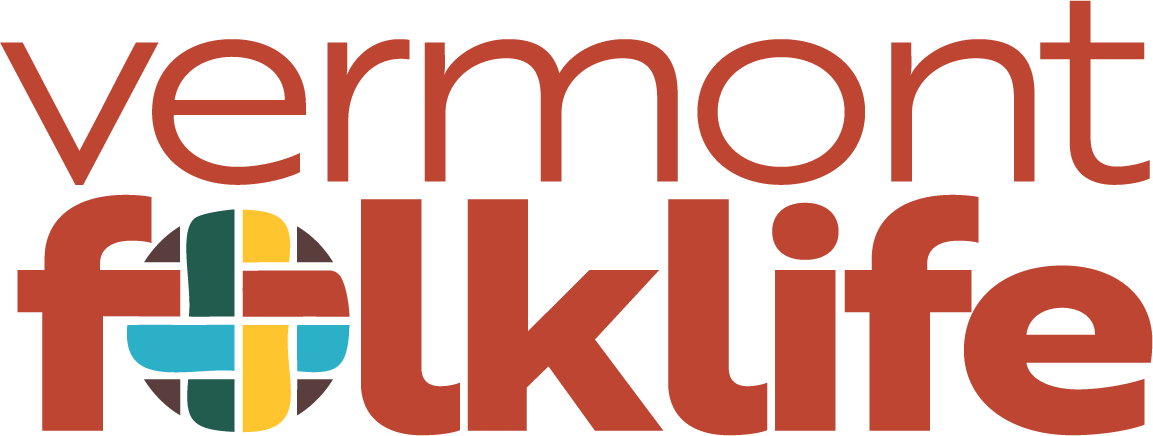NOFA's Vermont Farm Kids
Exhibit on display through January 4th, 2019
Vermont Farm Kids: Rooted in the Land is a traveling documentary exhibit and film celebrating the lives of a diverse array of youth who have grown up in farming families.
The exhibition features a film and portraits of young people shot on various farms (dairy, produce, livestock, and maple), and explores what it means to grow up as a farm kid and perhaps become an agricultural entrepreneur.
The project was created for the Northeast Organic Farming Association of Vermont (NOFA-VT) by Maria Buteux Reade, a Vermont farmer and freelance writer, and James Chandler, a videographer from Dorset, Vermont.
Reflections on the Exhibit Process by Maria Buteux Reade, interviewer
25 interviews. 33 hours of footage. 42 hours of editing. God knows how many cups of coffee and other libations.How the heck are we going to get this down to 45 minutes??
This Farm Kids project started as a casual idea at a NOFA mentors meeting more than a year ago, picked up traction last spring, and became a reality by early summer. In late July, my original videographer had to bow out because of time constraints. Fortunately, we hadn’t started yet. Rather than panic, a surreal calm engulfed me. I texted my friend James Chandler who was teaching at the Rocky Mountain School of Photography in Montana.
“Yo. When are you coming back to Vermont? I may have a project of interest. Give me a call.” The phone rang fifteen minutes later. I pitched James the overview of the project.
“But I’ve never made a video.”
“Not to worry. You’re a fantastic photographer and a fast learner. We can figure this out together. You in?”
A few seconds later. “Okay, but I have to be in Colorado by early October.”
Gulp.
“No problem.”
Game on.
James and I did our first interview on September 6, the Harvest Moon. 1,458 miles later, we completed our last on October 5, the Hunter’s Moon. I have never collaborated with someone so positive, proactive, undaunted, humble, cheerful, and just dang fun to be with. I don’t think we even turned on music as we traveled: we just talked and reveled in the scenery. The hours we spent planning and editing were energizing, not draining. James believed in the project as wholeheartedly as I. And even after he swapped the Green Mountains for the Rockies, we continued to fine tune the piece, via FaceTime.
Creating a documentary requires thousands of decisions from minor to significant. In every instance, we agreed. We bandied ideas, brainstormed solutions, hashed out approaches. We share a meticulous attention to detail, bordering on obsessive, but that pushed both of us to strive for perfection. Shave a second here, edit out that extra “ummm,” make sure each transition is smooth. In some cases, return to the farm and redo the interview or take new footage.
Nothing fazed James. When he encountered a potential glitch in editing, he simply Googled the answer or found a YouTube resource. His gleeful giggle and “yesss!” confirmed he solved the problem and added yet another new skill.
Highlights?
The road trips. Marveling at the beauty of our state, never taking the scenery for granted.
The hospitality of the families whom we visited. At odd hours of day and night based on the day’s itinerary.
The wisdom of the farm kids, their innate appreciation of the benefits of their agricultural lifestyle and heritage. That every single person we interviewed, from 8 to 29, recognized the gift of having open space in which to roam and adventure. In most every case, we simply showed up, said our hellos, and found a quiet-ish place to hold the conversation. James set up his cameras and we rolled from there. No pre-talking, no advance questions. Just got to it.
I discovered that editing video is exactly like editing writing. As a magazine editor and writer, I am keenly aware of the word count in the lower left corner of my screen. Working on this film, we both stared at the running time, watching it far exceed our allotment, then methodically, often painfully, scraping it back second by second until we achieved our targeted goal. We also could play with chunks of film and B-roll (secondary footage and still photographs added to enhance the video’s flow). Move a section here, shift that response there. So what appears in the final cut may look seamless but it sure didn’t begin that way!
I am indebted to Abbie Nelson and Enid Wonnacott of NOFA-VT for believing in James and me and for finding the funds for this project. Misse Axelrod orchestrated the team of NOFA Farm to Community mentors to contact potential farm family interviewees, as well as handled PR and arranged the showings in libraries around the state. Her organization was immensely helpful and her support comforting.
But above all, this documentary project is dedicated to the exceptional young adults who heeded our initial contact and said, Sure, come on by.
As Scout Proft says, “Here’s to the soil.” And I add, Here’s to these young farmers who are the future of Vermont agriculture.
With gratitude,
Maria
